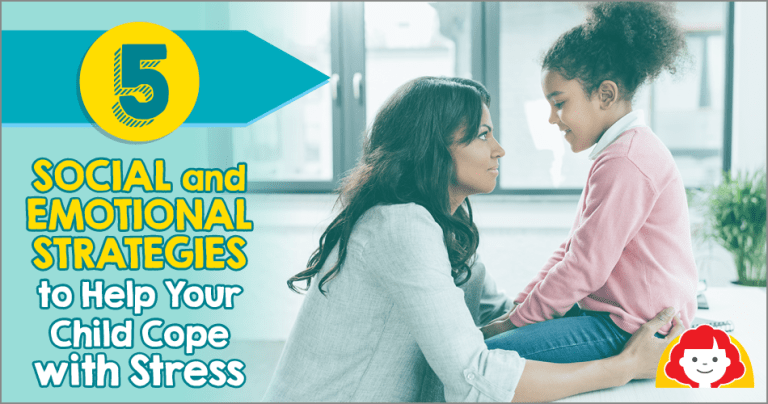
A change of routine can be hard on children, parents, and even pets. The addition of a health scare such as coronavirus can add even more anxiety to a situation. How can you help your children cope with being home-bound? Social and Emotional Learning strategies may help.
 1. Put aside time in the morning to start your day with positive statements. Model for your child how to identify everyday things to be grateful for. Focusing on the positive can help you and your child alleviate stress.
1. Put aside time in the morning to start your day with positive statements. Model for your child how to identify everyday things to be grateful for. Focusing on the positive can help you and your child alleviate stress.
 2. Incorporate breathing and movement into your day. Mindfulness exercises such as deep breathing and movement such as yoga can help you and your child feel centered and calm. Download this free mindfulness exercise here. Find a quiet place to do this. Model how to breathe deeply in through your nose and out through your mouth, infusing your body with oxygen. Make this a special time that is dedicated to self-care and mindfulness.
2. Incorporate breathing and movement into your day. Mindfulness exercises such as deep breathing and movement such as yoga can help you and your child feel centered and calm. Download this free mindfulness exercise here. Find a quiet place to do this. Model how to breathe deeply in through your nose and out through your mouth, infusing your body with oxygen. Make this a special time that is dedicated to self-care and mindfulness.
 3. Create a safe space for your family to share their feelings about the situation. Go to a comfortable space such as the living room sofa, a child’s bedroom, or a cozy nook in your house. Open the conversation by sharing your own feelings. “I know this seems scary, but I’m so glad that we are all home together in a safe place.” If your child does not know how to or cannot easily express his or her feelings, provide sentence frames for family members to finish.
3. Create a safe space for your family to share their feelings about the situation. Go to a comfortable space such as the living room sofa, a child’s bedroom, or a cozy nook in your house. Open the conversation by sharing your own feelings. “I know this seems scary, but I’m so glad that we are all home together in a safe place.” If your child does not know how to or cannot easily express his or her feelings, provide sentence frames for family members to finish.
I feel worried because _______________________.
I don’t know what will happen when/if _______________________.
I feel safe here because _________________________.
I like when we _________________________________.
 4. Encourage your child to write about his or her feelings. Journaling can help children express their feelings. Providing time to reflect and write about how they feel may reduce their anxiety. It can also give them an opportunity to self-soothe and recognize that they can let go of some of their fears.
4. Encourage your child to write about his or her feelings. Journaling can help children express their feelings. Providing time to reflect and write about how they feel may reduce their anxiety. It can also give them an opportunity to self-soothe and recognize that they can let go of some of their fears.
 5. Calming activities such as coloring, painting, or knitting can help manage stress. Having a quiet space to color or paint soothes the soul. Our busy minds slow down and focus on the creative task at hand. Knitting can also have a soothing effect and produce a feeling of satisfaction in what has been accomplished.
5. Calming activities such as coloring, painting, or knitting can help manage stress. Having a quiet space to color or paint soothes the soul. Our busy minds slow down and focus on the creative task at hand. Knitting can also have a soothing effect and produce a feeling of satisfaction in what has been accomplished.

About the Author: Lisa Vitarisi Mathews is Evan-Moor’s executive editor. She has over 20 years’ experience in PreK–8 education, and has worked closely with teachers across the United States through Evan-Moor product training and workshops.
5 Social and Emotional Strategies to Help Your Child Cope with Stress